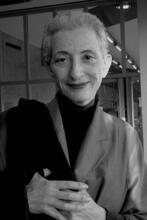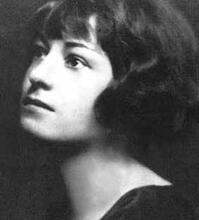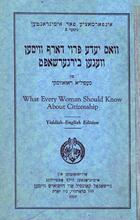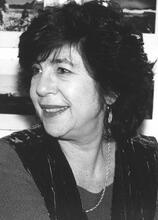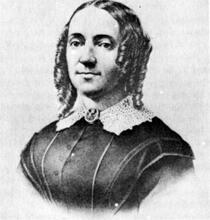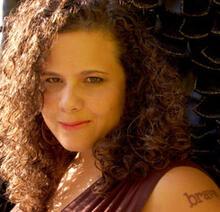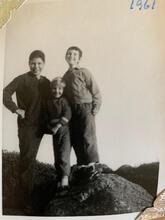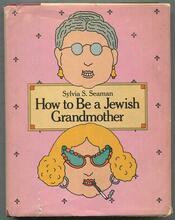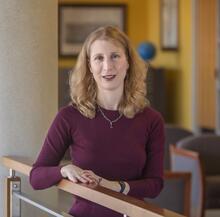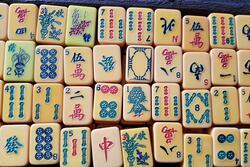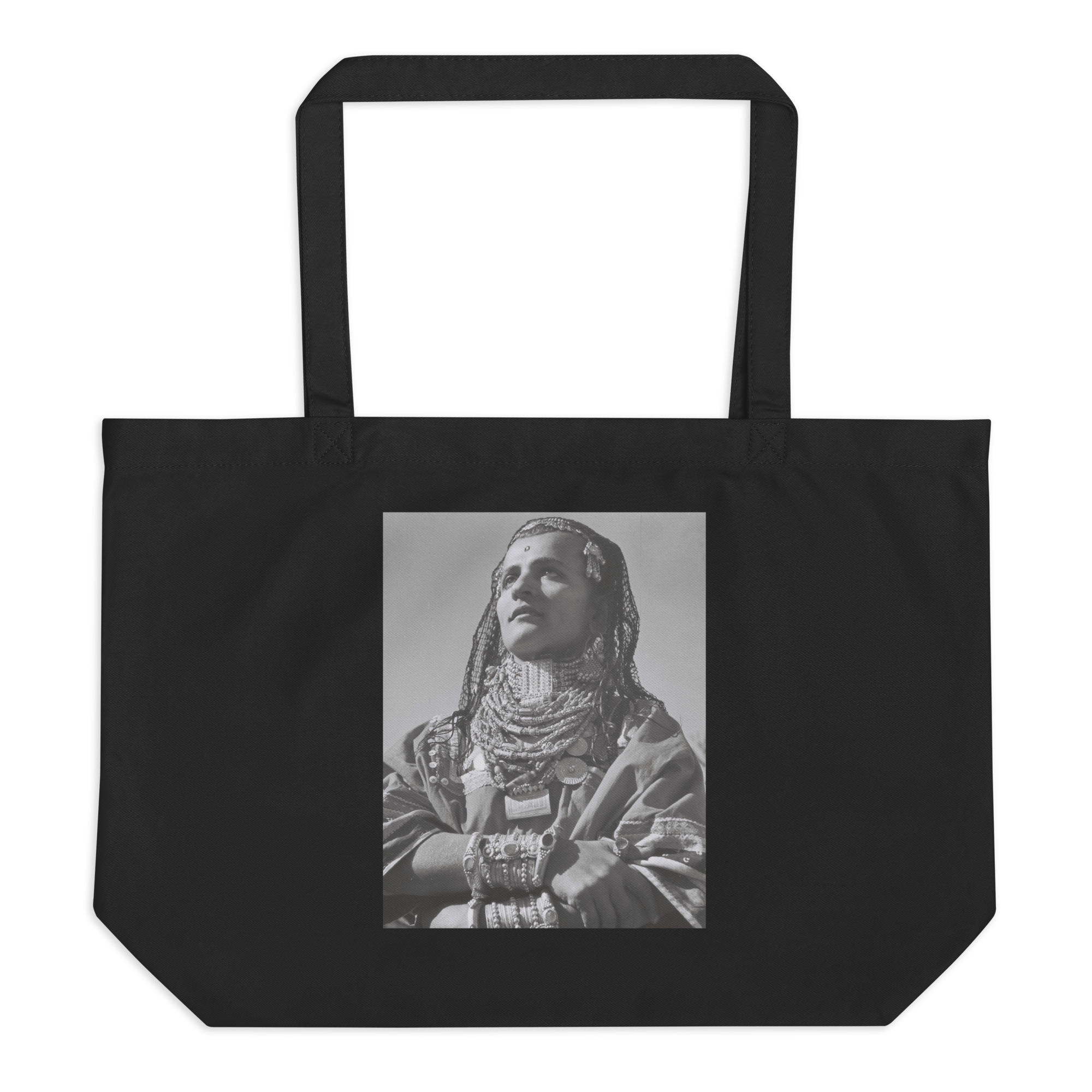Selina Solomons
Selina Solomons was an American suffrage activist and author who organized and fought for votes for women in California. Raised in a prominent Jewish American family in San Francisco, Solomons’ career started in the 1890s, when she began giving speeches and lectures preaching suffrage and matriarchy. As an author, Solomons wrote poetry and plays as a means of addressing women’s issues, including “Agnodice,” “Miriam’s Lullaby,” and “The Girl from Colorado.” Solomons was also a prominent organizer, working both the 1896 and successful 1911 campaigns for women’s suffrage in California and founding the Votes for Women Club in San Francisco. Solomons published the influential How We Won the Vote in California, a collection of the state’s women’s rights efforts, in 1912.
Family and Background
Selina Solomons was born in California on November 22, 1862, to Hannah Marks Solomons, who was born in Germany, and Gershom Mendes Seixas Solomons, a third-generation American and member of a prominent Sephardic family (categorized as “grandees” by historian Stephen Birmingham for their aristocratic status in early American and early American Jewish society). The couple met in California after they both migrated west during the Gold Rush.
Gershom Mendes Seixas Solomons was named for his grandfather; Gershom Mendes Seixas, the religious leader of New York City’s Congregation Shearith Israel, was known as the “patriot rabbi” for his stalwart support of the American Revolution, which earned him the honor of participating as a clergyman at the inauguration of George Washington. Variously employed as a journalist, accountant, and businessman, Gershom Mendes Seixas Solomons helped found San Francisco’s first Reform congregation, Temple Emanu-El, and was active in the city’s Jewish and civic life. Named for her paternal grandmother, Selina Solomons carried on the legacy of an illustrious family who had played significant roles in American politics and culture since the nation’s inception. Hannah Marks Solomons served as a model of woman’s independence for her daughter, maintaining a career as a teacher and school principal in addition to raising Selina and her six younger siblings. (A seventh sibling died in infancy.)
Solomons was educated in San Francisco’s public schools and completed two years of higher education at the University of California, Berkeley, where she planned to study literature. When her father abdicated responsibility for the family due to alcoholism, she dropped out of school to work as a piano and English teacher, helping her mother support and manage the household and nursing Hannah through illness. One of her sisters passed away from typhoid at age seven, while the other, Adele, became a physician and nutrition expert at a time when it was unusual for women to earn medical degrees. Selina and her mother lived for a time with Adele, her two children, and her husband, Myer Edward Jaffa, a chemist and nutrition professor at the University of California. Solomons’ brothers were highly accomplished as well. Lucius Levy Solomons, a lawyer and leader in the Jewish community, was known as the “silver-tongued orator of the Golden West.” Leon Mendez Solomons was a promising scholar of philosophy and psychology who passed away at age 26, shortly after his appointment to a professorship at the University of Nebraska. Today, the best-known sibling is Theodore Seixas Solomons, a mountaineer and explorer who has been recognized for the role he played in establishing the John Muir Trail and photographing the Sierras in the 1890s.
Activism
Selina Solomons’ career took off in the 1890s when she began speaking out on behalf of women’s rights. Her earliest talks were on the subject of dress reform, but she soon became a vocal proponent of women’s right to vote. At the Woman’s Congress of the Pacific Coast in 1895, she appeared alongside speakers such as Susan B. Anthony, Anna Howard Shaw, and Charlotte Perkins Stetson (later Gilman), delivering a talk titled “The Matriarchate.” Drawing on historical examples of matriarchal societies, she argued that the development of the human race depended on equality between men and women and optimistically prophesied a new “mother-age” in the United States. “We women, who watch by the Western sea, know that the time is here,” Solomons declared, “Across the bridge of the near future lies our promised land.” In addition to formal lectures like “The Matriarchate,” Solomons also engaged in what she called “street” or “open-air speaking,” in which suffragists would discourse publicly on women’s rights from soap-boxes or automobiles. Their goal was to gather new converts into the suffrage fold by reaching people who were not already predisposed to attend women’s conventions, including those who lived in rural areas—hence, the use of automobile tours.
Solomons honed her organizational skills beginning in the 1880s, when she was elected as an officer of the Woman’s Club of San Francisco. During the unsuccessful 1896 suffrage campaign, she was a member of the California team, working alongside national women’s rights leaders such as Ida Husted Harper and Carrie Chapman Catt, as well as Shaw and Anthony. Beginning with her canvassing efforts in the 1890s, she recognized the importance of bridging class divides between San Francisco’s affluent women and poor immigrants. Solomons became increasingly strategic and creative as an activist following the failed 1896 campaign. One of her innovations was to found the Votes for Women Club in 1910 on Sutter Street in San Francisco. The club targeted working women by functioning as a lunchroom that drew in women wage-earners with the promise of a hot meal, while also serving them suffrage propaganda in the form of reading material, eye-catching posters, conversation, and paraphernalia such as pennants and pins. The club hosted events, from performances of humorous skits and parodies to a “Human Flower Show,” a baby contest featuring the offspring of suffragists, for which Solomons was a judge.
Writings
On the United States Federal Census of 1910, Solomons identified her occupation as an author. From her extant writings, it is evident that she worked in multiple genres and that she viewed writing as a means of addressing women’s issues. Under the name Selina Seixas Solomons, she published poetry with feminist themes. “Agnodice” is about a heroic Athenian woman who becomes one of the earliest Greek midwives by disguising herself as a man in order to study medicine, a profession forbidden to women. When she is called before a judge and accused of immorality, “brave Agnodice” uses her voice to speak out against injustice, pleading with the “men of Athens” to “give” women “a larger freedom, standing at your side / As equals, and no longer slaves and toys!” “Miriam’s Lullaby,” published in The Menorah (the magazine of B’nai B’rith), retells part of the Book of Exodus from the perspective of Moses’s sister, who warns that Pharoah underestimated “Israel’s mothers and Israel’s God.” In Solomons’ poem, women are a force to be reckoned with: “For out of her great mother-love cometh wisdom,--- / Discovering a way her loved offspring to keep.” In the early twentieth century, Solomons turned to travel writing, publishing columns in the Los Angeles Times about her experiences as a woman from the western United States traveling abroad. Solomons also wrote California’s suffrage campaign song and pro-suffrage verses, which were printed and disseminated on postcards and placards.
In 1911, while vacationing in Yosemite, Solomons completed a suffrage play titled The Girl from Colorado or the Conversion of Aunty Suffridge. Described in promotional materials as “A Playlet with a Purpose” and “An American Votes for Women Comedy with a Love Interest,” the play focuses on a California clubwoman and anti-suffragist whose niece pays her a visit from Colorado, one of the early states to grant women the right to vote. Over the course of three acts, “the girl from Colorado” persuades the wittily named “Aunty Suffridge” that women in her state, too, should exercise their rights at the ballot box. The play concludes not only with the promised political “conversion” but also with all three women characters—Aunty Suffridge; her ward, Ivy Millstone; and her niece, Constance Wright—conveniently paired off in marriage in order to demonstrate that suffrage was not antithetical to domestic life, nor did it make women “unattractive to men.” The play was performed at venues throughout California, including at Stanford University and in the lunchroom of the Votes for Women Club.
When California voted to enfranchise women on October 10, 1911, becoming the sixth state in the nation to extend the vote to women, Solomons organized and spoke at celebratory banquets. Shortly thereafter, she documented the collective efforts of her state’s women’s rights activists in How We Won the Vote in California, published in 1912, in which she proclaimed October 10, 1911, not only “the greatest day of my life” but also “one of the greatest days in the life of my community, my state, and my country.” A how-to guide for suffragists agitating elsewhere in the United States and abroad, How We Won the Vote in California doubles as a suffrage history in the tradition of the monumental History of Women’s Suffrage, the multivolume work that Elizabeth Cady Stanton, Susan B. Anthony, Matilda Joslyn Gage, and Ida Husted Harper began working on in the 1880s. Solomons’ prose captures the campaign’s energy, as well as her own exhaustion and joy. She rehearses arguments to counter anti-suffragists, whom she disparagingly refers to as the “anti’cs,” and promotes the use of “suffrage stunts” as a way to attract media attention to the cause.
Solmonons later revised How We Won the Vote in California, which was reprinted in the following decade, influencing suffragists in other states as they worked towards the passage of the 19th Amendment to the US Constitution in 1920. Following the success of the 1911 campaign, Solomons held a wake for the Votes for Women Club and transformed it into a Home Club, which continued to serve the needs of working women. Although she did not renounce Judaism, she went on to explore religious interests in theosophy and spiritualism and supported herself by becoming a practicing astrologer. Advertising her services as a “Solar Biologist” and “Scientific Astrologer,” she supplemented the interest from a family inheritance with income earned from creating horoscopes. According to her niece, Aileen Jaffa, Solomons continued to write, working on a book about astrology that was never published.
Unlike her characters in The Girl from Colorado, Solomons did not marry, believing in the necessity of some women remaining celibate in order to serve society at large, unhampered by spousal and maternal duties. In the last decades of her life, she lived independently in a home she owned, with the census listing her as the head of her household. She died on February 9, 1942, and was cremated at Home of Peace, the cemetery associated with Temple Emanu-El, the synagogue her father had helped found during the Gold Rush. Although it is unclear why Solomons faded from the limelight as a writer and activist in the decades after women obtained suffrage in California, voter registration records indicate that she continued to exercise the right she had worked tirelessly to win for American women.
Selected Works by Selina Solomons
“Agnodice.” The Arena (March 1897): 584-589.
“Miriam’s Lullaby.” The Menorah (October 1897): 201-202.
“The Sale of Susie: The Way a Girl Mortgaged Herself.” The Atlanta Constitution, January 10, 1897, 4.
“A Woman in Europe.” Los Angeles Times, June 11, 1905, 15.
The Girl from Colorado or The Conversion of Aunty Suffridge: A Playlet with a Purpose. San Francisco: Votes-for-Women Publishing, 1911.
How We Won the Vote in California: A True Story of the Campaign of 1911. San Francisco: New Woman Publishing Company, 1912.
“Suffrage Campaign Song for California.” BANC MSS C-B 773, Box 1, Selina Solomons Papers, The Bancroft Library, University of California, Berkeley.
Abrams, Jeanne E. Jewish Women Pioneering the Frontier Trail: A History in the American West. New York: New York University Press, 2006.
Birmingham, Stephen. The Grandees: America’s Sephardic Elite. Syracuse, NY: Syracuse University Press, 1997.
Capwell, Harriet Watson. “Votes for Women Club.” San Francisco News Letter, March 19, 1910, 15.
Chapman, Mary. Making Noise, Making News: Suffrage Print Culture and U.S. Modernism. Oxford: Oxford University Press, 2014.
Elinson, Elaine. “Map Room: Selina Solomons, Iconoclastic Suffragist of San Francisco.” California History 97. 4 (2020): 151-160.
Elinson, Elaine. Wherever There’s a Fight: How Runaway Slave, Suffragists, Immigrants, Strikers, and Poets Shaped Civil Liberties in California. Berkeley, CA: Heyday, 2009.
Harrison-Kahan, Lori. West of the Ghetto: Jewish Women, Old San Francisco, and American Literary Culture. Detroit: Wayne State University Press, 2026.
Hoberman, Michael. “Jews in the Wilderness.” Tablet, January 24, 2024, https://www.tabletmag.com/sections/history/articles/jews-in-the-wilderness.
“The Morning Session: Suggestions and Thoughts of the Week Epitomized by Clever Speakers—Hundreds and Hundreds of People Turned Away.” San Francisco Call, May 26, 1895, 8.
Rochlin, Harriet and Fred Rochlin. Pioneer Jews: A New Life in the Far West. Boston: Houghton Mifflin, 1984.
Rosenbaum, Fred. Cosmopolitans: A Social and Cultural History of the Jews of the San Francisco Bay Area. Berkeley, CA: University of California Press, 2009.
Rosenbaum, Fred. Visions of Reform: Congregation Emanu-El and the Jews of San Francisco, 1849-1999. Berkeley, CA: Judah L. Magnes Museum, 2000.
Sargent, Shirley. Solomons of the Sierra: The Pioneer of the John Muir Trail. Yosemite, CA: Flying Spur, 1989.
Selina Solomons papers, circa 1867-1921, BANC MSS C-B 773, The Bancroft Library, University of California, Berkeley.
Silver, M. K. “Selina Solomons and Her Quest for the Sixth Star.” Western States Jewish History 31.4 (Summer 1999): 301-318.
Stern, Norton B. “Our Pioneer Heritage: Lucius L. Solomons.” Emanu-El: Jewish Community Bulletin, December 11, 1981, 5.
“Suffrage Drama is Written to Assist Cause of Women: Miss Selina Solomons is the Author of Play to Be Produced.” San Francisco Call, August 12, 1911, 13.
Voorsanger, Jacob. “Leon Mendez Solomons (1873–1900).” Western States Jewish Historical Quarterly 10 (1978): 138–145.
